Overview
Overview
Wildlife conservation has been an ongoing effort for decades in response to poachers. However, it has been difficult to reduce the number of kills each year from population to population because humans have always viewed animals in the wild as less than. My campaign is based on the line “Family: #WeHaveThemToo,” which directly tackles the issue above. Not only does the hashtag reframe the narrative and give animals a first person point-of-view, but the word prefacing it—family—touches upon a popular human value and, in turn, humanizes the animals featured. Thus, my target market consists of parents and millennials, the latter of which older generations deem as “snowflakes” due to their tendency and ability to feel empathy for others.
I also have high hopes for this concept to work because it enforces the idea that when you kill a lion, a rhino, a kangaroo, etc., you are not killing just a lion, just a rhino, or just a kangaroo; you are killing a mom, a dad, a sister, a brother. Humans are not the only species with strong family ties. Similar to how we hug and kiss the members of our own family, lions greet each other by rubbing heads and licking each other. This applies to other species, and these acts of affection vary from population to population, which I will illustrate using different media.
Assets
In the digital sphere, there will be a website launch that includes a campaign video followed by image cards detailing why human beings kill these species, what they harvest from them, and for what purpose. A majority of the time, what we rob from these animals become expensive delicacies and clothing accessories. The delicacies are considered exotic, but the accessories are very much mundane and what people use in their day-to-day. Therefore, while I will still mention expensive delicacies like shark fin soup, I will also list the everyday items that people own in an effort to sway them to abandon said items or at least call out the companies that manufacture them.
In the physical realm, there will be banners posted in subways, at bus stops, and on billboards in highly populated areas. These banners will be side-by-side comparisons of human families and animal families; the images will be similar in composition and subjects so as to illustrate to people that animals are also beings that experience emotion. In addition to banners, there will also be an immersive installation utilizing virtual reality headsets. These temporary installations will be housed in frequented museums and offer visitors the opportunity to observe highly targeted animals in their natural habitat. The simulations will be of animal families caring for each other.
By presenting “family” as a shared value, people will be more likely to empathize with these loving creatures, thus advancing the goal of wildlife conservation.

Banners
Banners
In large cities, many parents and millennials take public transportation to work, so placing ads for them to view in between waiting is a good idea. Having portraits of human families and animal families side by side will cause double-takes because people passing by will wonder what the two have in common, and having the “Family: #WeHaveThemToo” front and center immediately humanizes the experience.
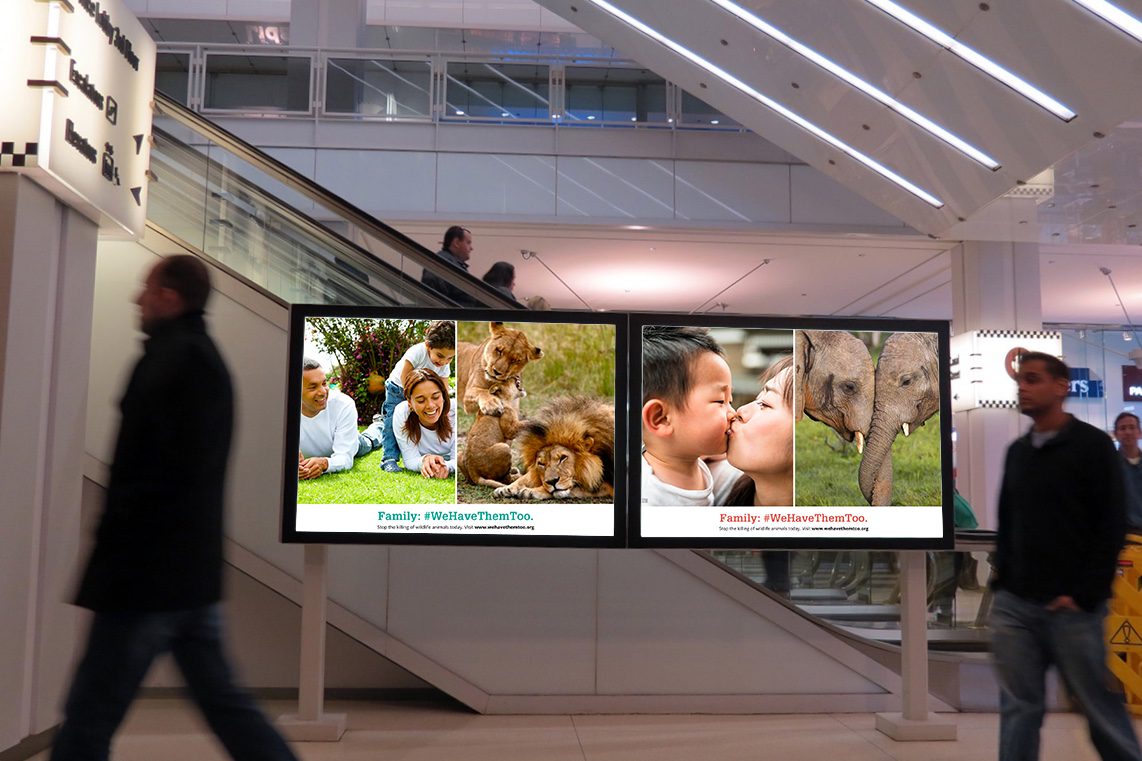
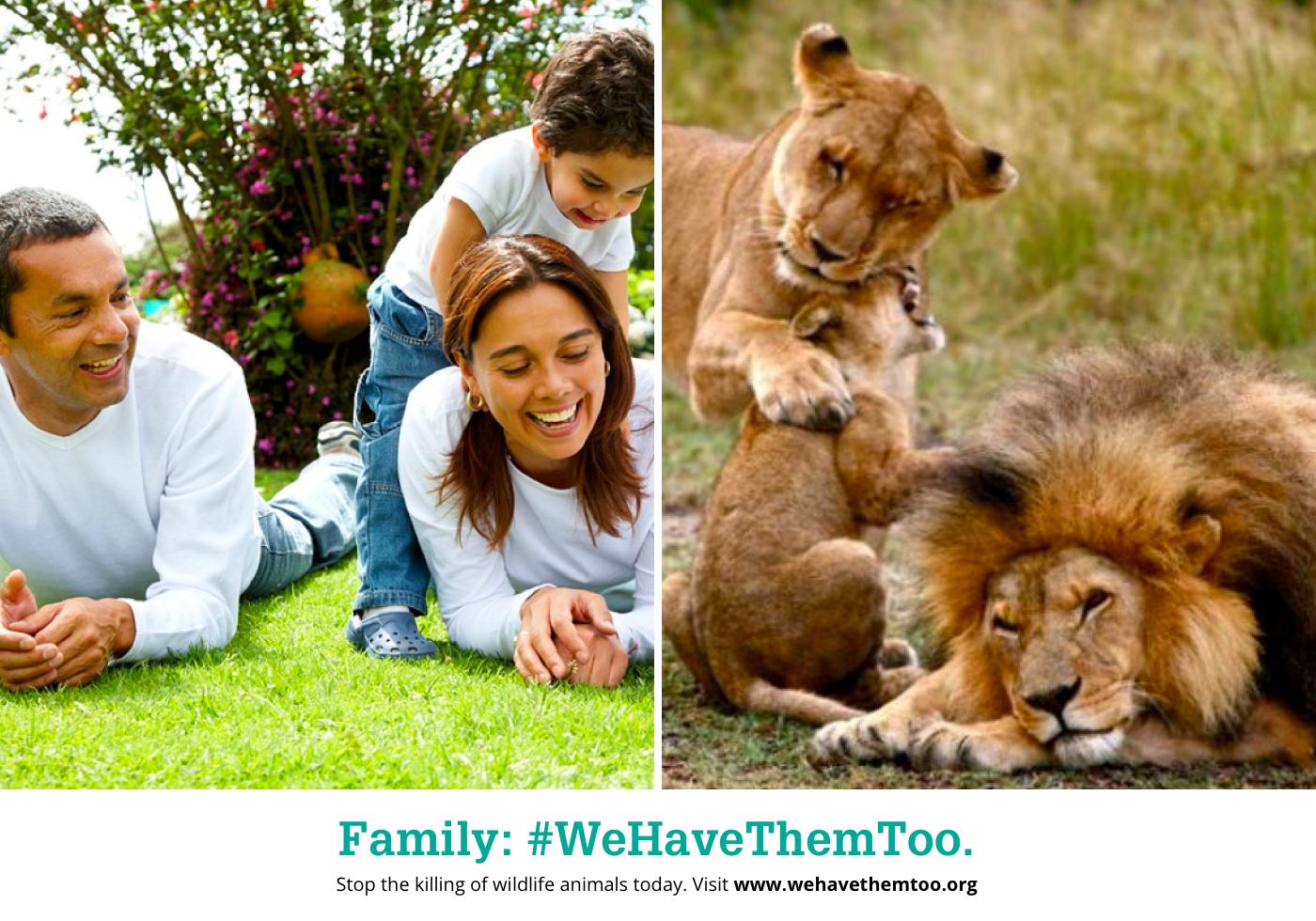
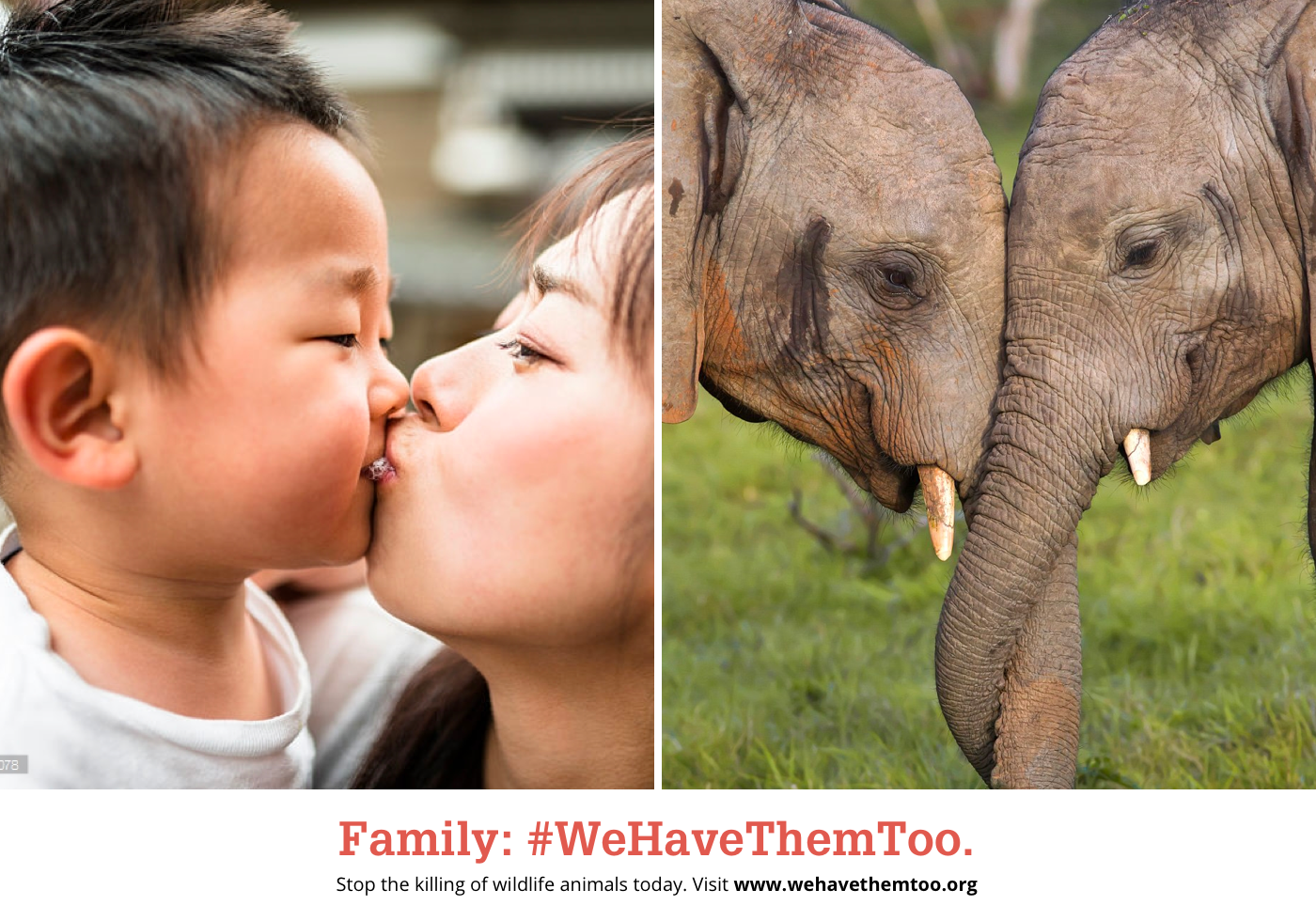
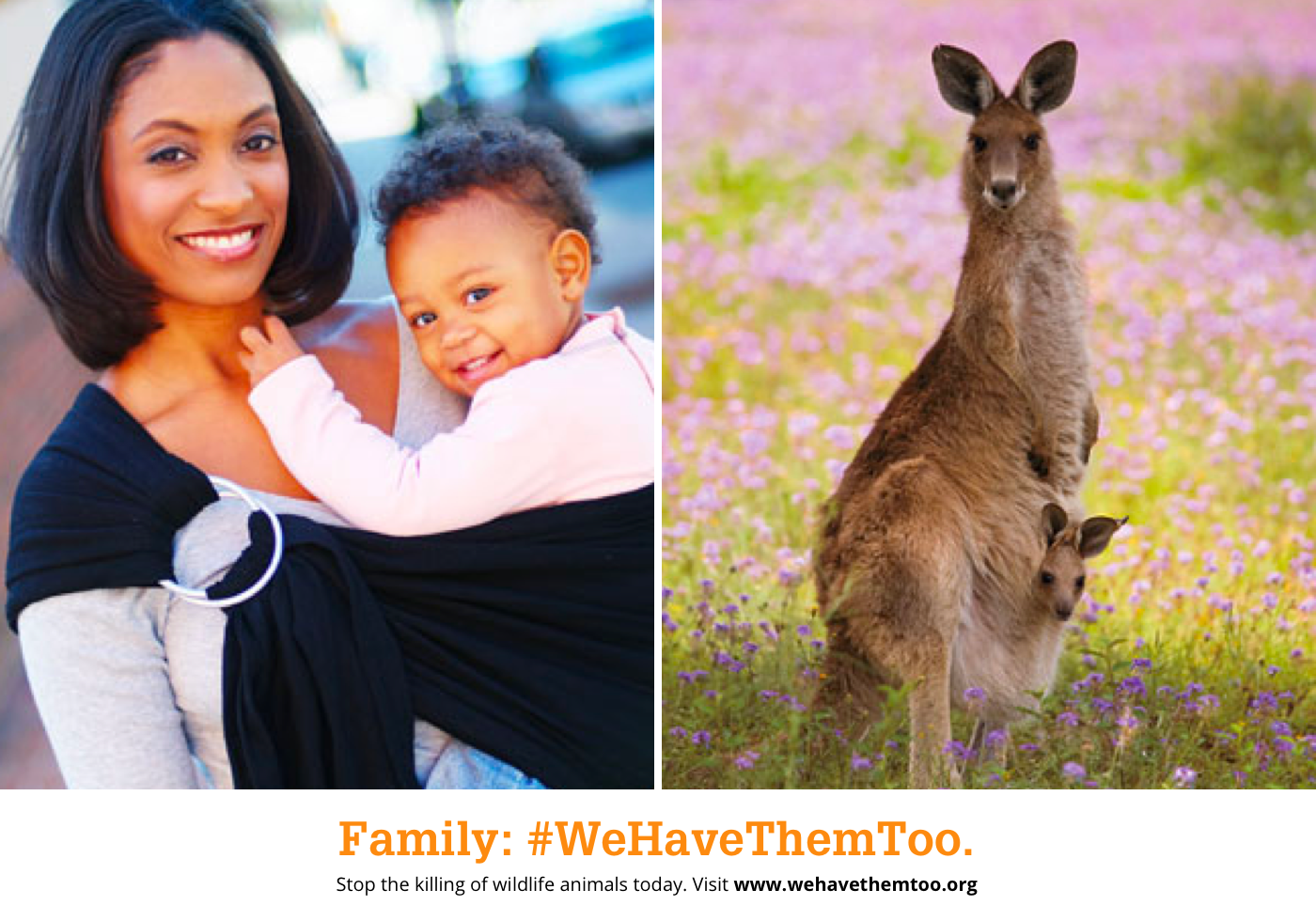
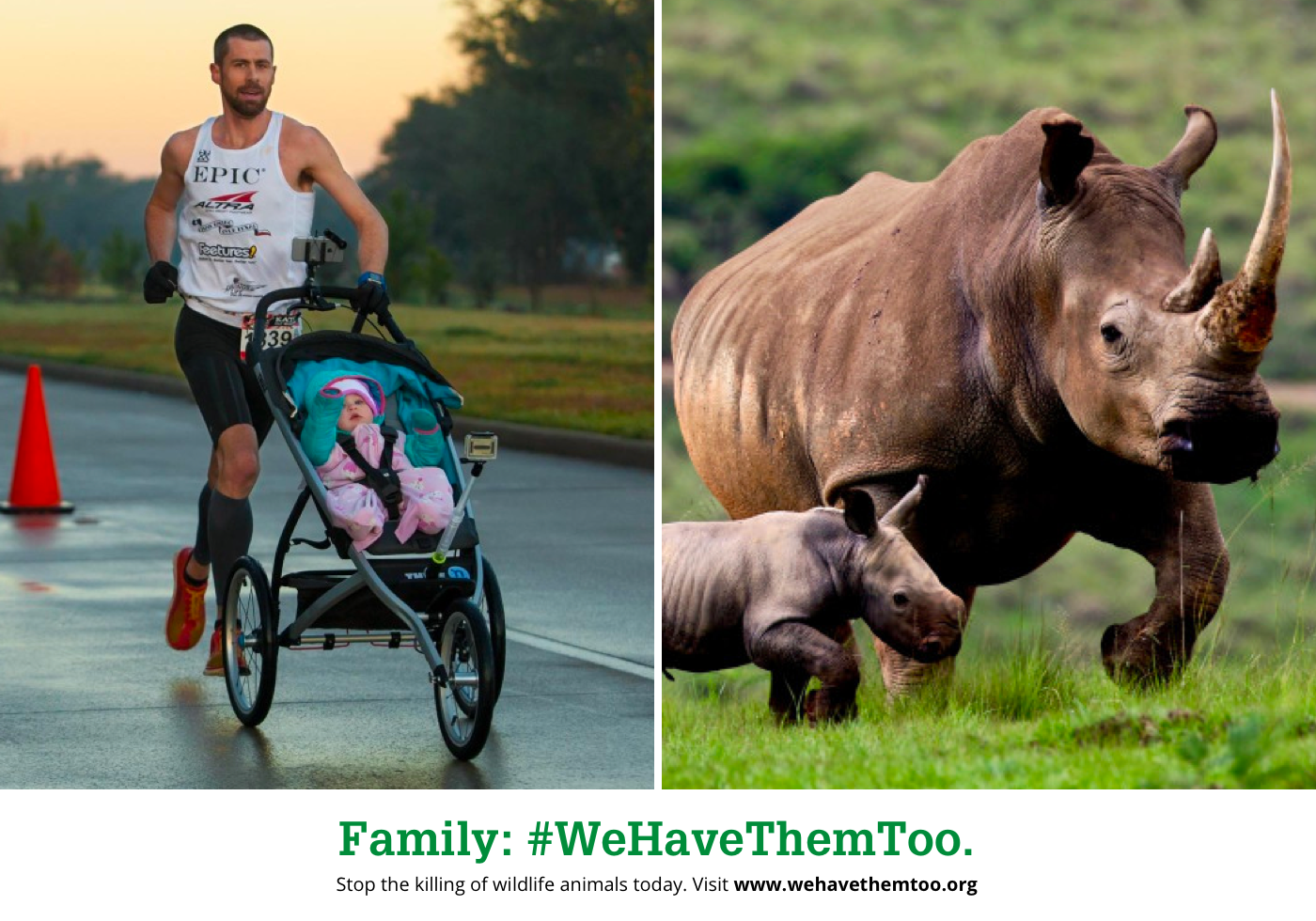
Immersive Installation
One of the reasons why people may not care about wildlife being poached and killed is because these animals live so far away, in “distant realms” completely unfamiliar to the average citizen. This is the embodiment of the phrase “Out of sight, out of mind.” However, an immersive installation taking place at a popular museum (Whitney Museum of Art, The Broad, LACMA, MoMA) will bring the animals to the people, or rather, the people to the animals.
Using virtual reality headsets, visitors will be able to observe animals in their natural habitats. The simulation will consist of animal families doing things any human family would do; to name a few, there would be playfights between siblings (lion cubs wrestling), parents bathing their kids (elephants using their trunks to give showers), and affectionate nuzzling (kangaroos in an embrace.) Each room would consist of a different species, and at the exit would be a tall donation box for visitors emotionally moved by the installation.


Takeaways
Takeaways
This conceptual project forced me to think about the uses of traditional media like physical ads and websites, but also about emerging technology like virtual reality. I ultimately wanted to construct an immersive experience for people.
Credit
Credit
I found all images of wildlife and people on Google.
I found all images of wildlife and people on Google.